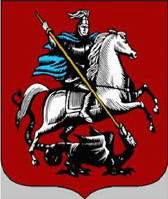
History of Moscow: Historical part of the Tverskaya Street in Moscow to be turned into the archaeological museum
The Tverskaya Street in Moscow will be turned into an archaeological museum. Part of the bridge of the XVII-XVIII centuries on the modern street will be glazed so the Muscovites will be able to see the historic street.
The glazed part of the Tverskaya is backlit, heated for winter use, so the Muscovites could enjoy a long history of the Tverskaya at any time of the year.
The landscaping of the Tverskaya Street to be completed by September. At the same time Muscovites will be able to see the site of the historic road.
Wooden bridge on Tverskaya was unearthed during the landscaping program. The area of the house number 16 was found its edge. Fragments of the bridge were located at a depth of 1.2-1.3 meters.
Several boards were sent to dendrochronological examination, and the site at the time of mothballed. During the examination, based on the study of growth rings of wood, specialists will be able to find out, to what time is the discovery. While it is tentatively attributed to the XVII-XVIII centuries. The bridge appears and disappears for five linear meters. The main part of it is under the roadway of the street, and in the course of work it will not be touched.
The remains of four tiers were preserved. They all consist of decking and longitudinal lag (logs). On the upper deck were discovered signs of the impact of fire (fire of the XVIII century). When cleaning the pavement in layers between the tiers, archaeologists also found fragments of white clay and the dish, utensils copper buttons, weights, cross, cutting leather goods, wood and coal ashes.
What on the Tverskaya Street has several tiers of wooden bridge, archaeologists had long been known. Under the bridge of the XVIII century there are another five tiers of the XVII century.
For all time of work thousands of artifacts and historical objects have been found. All findings will be submitted to the Moscow Museum until 2019, and fragments of fences, bridges, foundations will be remained at the same place and will be preserved.

